Suffering from Missing Teeth? Here are 3 Solutions to Transform Your Smile

A confident and radiant smile is often associated with attractiveness, even helping to create a positive and welcoming first impression at times. But if you have one or more teeth missing, you may feel more self-conscious about your appearance, making you less likely to smile openly or even cause you to avoid certain situations.
If you find that you’ve been smiling or interacting less due to missing teeth, it’s time to do something about it!
Fortunately, whether your missing teeth are caused by accidents, decay, or other factors, there are numerous ways to restore teeth and improve your quality of life. These options can help you regain confidence and benefit from a beautiful and functional smile again. We share three solutions in this article to help you find the most suitable one for yourself.
1.1. The Consequences of Missing Teeth
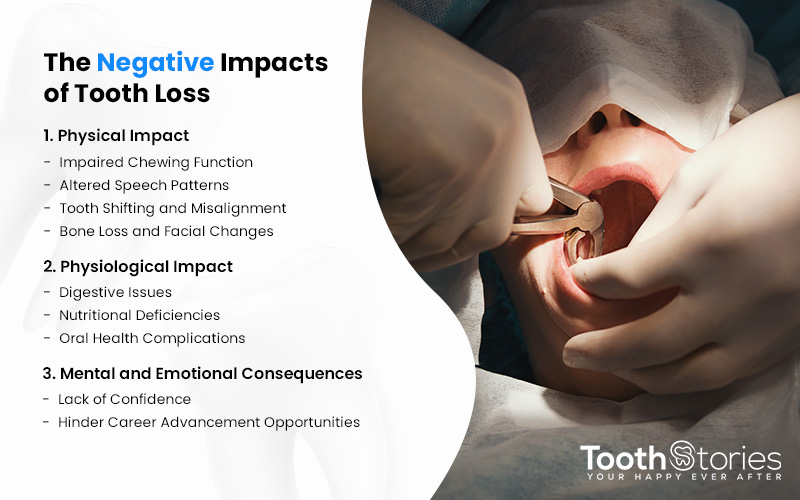
If you’re someone who’s not too bothered by your appearance, losing one or two teeth may not seem like an issue to you. But, missing teeth shouldn’t be overlooked because apart from visual appeal, it can also have physical and physiological consequences that will negatively impact your overall health and well-being. Find out more below.
A. Physical Consequences
• Impaired Chewing Function
Your teeth play a crucial role in helping you chew food effectively. Even the absence of a single tooth can affect your eating experience. When there’s a gap, other teeth may shift position and alter bite alignment. This can hinder the way you chew food and lead to uneven wear on certain teeth.
• Altered Speech Patterns
Our oral structures also affect how we speak. In fact, our teeth shape the sounds we produce and aid in the formation of clean and precise speech. When a tooth is missing, your tongue and lips may struggle to find the necessary support and guidance, resulting in mispronunciations, slurred speech, or even a lisp.
• Tooth Shifting and Misalignment
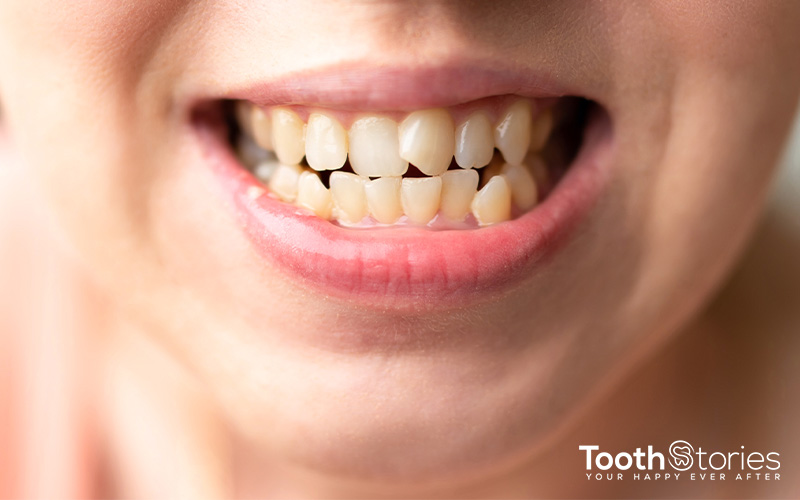
Our teeth function as a collective unit, exerting pressure on each other to support proper alignment and serve various functions. When a missing tooth causes a gap, the neighbouring teeth tend to shift into the available space. This can lead to misalignment and even cause negative oral health implications. For example, it can allow plaque and bacteria to accumulate in the new nooks and crannies, increasing the risk of cavities, gum disease and other dental issues.
An irregular bite will also result in an uneven distribution of chewing forces, causing symptoms like jaw pain, headaches, and even lead to the development of temporomandibular joint disorders.
• Bone Loss and Facial Changes
Apart from helping us speak and eat, our teeth can also affect our facial structure. Our jawbones rely on tooth roots for stimulation to maintain bone density and strength. This gives our face definition. Without them, the jawbone will gradually deteriorate in a process known as resorption, which will cause our bones to lose volume and density, leading to a sunken appearance with pronounced wrinkles and sagging skin.
Bone loss also affects the function of your oral cavity, making it difficult to support dental restorations such as dental implants or bridges. This further exacerbates the issue of missing teeth and can introduce a vicious cycle of dental problems.
B. Physiological Consequences
• Digestive Issues

Chewing is the first step in digestion, where food is broken up into smaller pieces to make the process easier.
When there are missing teeth, the chewing process can become compromised, resulting in larger food particles that are difficult to digest reaching the stomach. This places additional stress on the digestive system, potentially leading to discomfort, bloating, and indigestion.
Poorly chewed food can also disrupt the balance of gut bacteria, affecting digestion and potentially leading to gastrointestinal problems.
• Nutritional Deficiencies
Besides helping food become easier to digest, chewing also initiates the release of enzymes in the saliva. This step is vital in breaking down carbohydrates to make them more accessible for absorption in the later stages of digestion.
Missing teeth can cause food particles to bypass this initial enzymatic action. As a result, the body may struggle to extract essential nutrients from the ingested food. In the long run, this can lead to nutritional deficiencies, which can prevent the body from maintaining a robust immune system.
• Oral Health Complications

Apart from teeth misalignment and bone loss, missing teeth can also affect your gum and oral health. Much like our jawbone, our gums rely on the presence of teeth for support and stimulation. Without them, our gums will recede, exposing the sensitive root surface of the teeth. This increases sensitivity to hot and cold temperatures and leaves the teeth vulnerable to decay.
Learn More: Why is Oral Health So Important?
C. Mental and Emotional Consequences
Our smiles are powerful tools of communication. But with missing teeth, you may find yourself reluctant to smile openly, laugh freely or engage in social interactions. Over time, this self-imposed restraint can erode self-confidence and create a barrier to authentic connection with others.
This lack of confidence can also make you shy away from leadership roles or public speaking situations, hindering career advancement opportunities. You might even feel isolated or excluded in social settings and miss out on meaningful connections and experiences.
In light of these potential complications, addressing missing teeth takes on a new level of significance. Dental interventions such as dental implants, bridges, or dentures are some options you can explore to restore numerous functions of the teeth. Continue reading for more information.
SOLUTIONS FOR REPLACING MISSING TEETH
2.1. Dental Implants
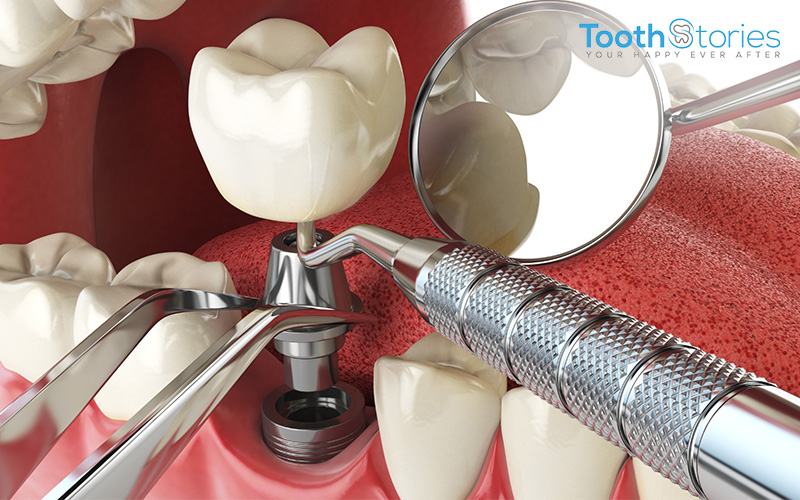
Dental implants are small titanium posts that are surgically placed into the jawbone to serve as a tooth root replacement. They provide a stable foundation for artificial teeth, such as crowns or dentures, and are popular and effective solutions used to replace missing teeth permanently.
If you’re looking to transform your smile, tooth implants offer a range of benefits that make them a preferred option. Here’s a look at some of them.
Learn More: What are Dental Implants and Who are they for?
A. Restore the Appearance and Functionality of a Natural Smile
The custom-designed crowns used with dental implants provide a remarkably natural solution for tooth replacement. They are carefully designed and crafted to match your existing teeth’s shape, colour, and alignment, creating an aesthetically pleasing smile.
Besides blending seamlessly with your natural teeth to ensure that your smile looks and feels authentic, dental implants also give you the freedom to chew and eat a variety of foods. This means that you won’t have to limit your diet and can continue to enjoy your favourite foods.
But that’s not all, dental implants can help to improve speech and pronunciation too.
B. Greater Comfort and Confidence
Unlike certain tooth replacement options that can slip out of place, dental implants are securely anchored in the jawbone. This eliminates the discomfort and potential embarrassment associated with loose-fitting prosthetics. You can speak, eat, laugh, and engage in social activities with complete confidence, knowing that your replacement teeth will remain stable and won’t shift around.
C. Preserve the Overall Structure of the Jawbone
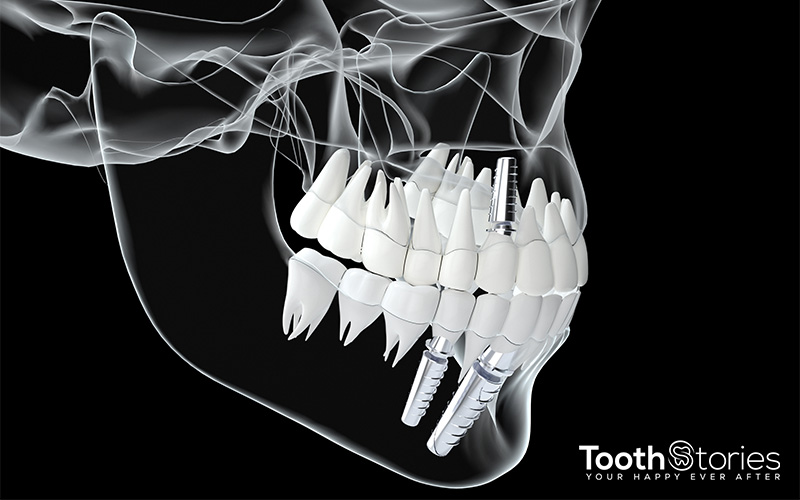
When a tooth is lost, the underlying jawbone may deteriorate slowly due to the lack of stimulation from the tooth root. Dental implants are able to help prevent this bone loss by replacing the tooth root with a titanium fixture. This stimulation promotes bone health and preserves the natural contours of your jaw to maintain facial integrity and prevent the sunken appearance that can occur with missing teeth.
D. Permanent Solution
Dental implants are able to last a lifetime with proper care and regular dental check-ups. Unlike other solutions that may need replacement or adjustments over time, dental implants are designed to be a permanent fixture in your mouth, eliminating the hassle of frequent replacements.
E. Minimal Impact on Adjacent Teeth
Dental implants do not rely on adjacent teeth for support. In fact, with implants, the surrounding teeth can continue to function healthily without having to be altered to accommodate the dental implant. This contributes to overall oral health and reduces the risk of damage to healthy teeth.
While dental implants offer numerous advantages, it’s important to consider the potential drawbacks or limitations associated with this treatment option. Here are the cons of dental implants you should know about before committing to this treatment.
A. Lengthy Treatment Process
Dental implant treatment typically involves multiple stages and requires a significant amount of time to complete. The process includes evaluation, surgical implant placement, healing periods, abutment placement, and crown attachment. These stages are usually spaced out to allow for proper osseointegration—the fusion of the implant with the jawbone.
Depending on individual circumstances, the process of getting dental implants can take several months to a year. If you’re looking for a quick tooth replacement, this could be something to think about.
However, the good news is that with advanced technology, there are quicker ways to get dental implants done too. This depends on your oral health condition. Do speak with a dental surgeon for more information.
Learn More: Immediate Implants: Having My Tooth Extracted and a Dental Implant Placed on the Same Day
B. Requires a Sufficient Amount of Healthy Jawbone
The implant fixture used in the dental implantation procedure relies on a healthy amount of jawbone for support. If you suffer from significant bone loss due to factors like long-term tooth loss, gum disease, or medical conditions, you may not have enough bone to securely anchor the implant. In such cases, additional procedures like bone grafting may be necessary to augment the bone volume before implant placement. These procedures can add complexity, time, and cost to the overall treatment process, and not all patients are suitable candidates for these extra interventions.
The Process of Getting Dental Implants
Step 1: Consultation and Treatment Planning

The dental surgeon will conduct a thorough examination of your oral cavity and jawbone, as well as take X-rays or CT scans to evaluate bone density and structure. They will also review your medical history to determine your eligibility for the procedure. A personalised treatment plan will then be developed. It will outline the number of implants needed, their optimal placement positions, and any potential additional procedures that may be required.
Step 2: Implant Placement
Local anaesthesia will be given to ensure your comfort during the procedure. After which, the dental surgeon will make small incisions in your gum tissue to expose the jawbone and create small channels for the implant fixtures to be placed. Once the implant fixtures are inserted into the bone, the gum tissue will be sutured back in place.
Step 3: Abutment Placement
Once osseointegration is complete, a second procedure will be performed to expose the top of the implant fixtures. An abutment—a small connector piece—will then be attached to each implant. This abutment will serve as the anchor for the replacement tooth.
Step 4: Impressions and Crown Design
After the abutments are in place, impressions of your teeth and abutments will be taken. They will be used to create a custom-designed crown that will fit precisely over the abutments and provide a natural appearance and comfortable fit.
Step 5: Final Restoration
Once the dental crown is fabricated in a dental laboratory, it will be attached to the abutments. The restoration is carefully adjusted to ensure proper alignment, bite, and aesthetics. Your dental surgeon will check the fit and function of the restoration and make any necessary adjustments.
2.2. Dental Bridges
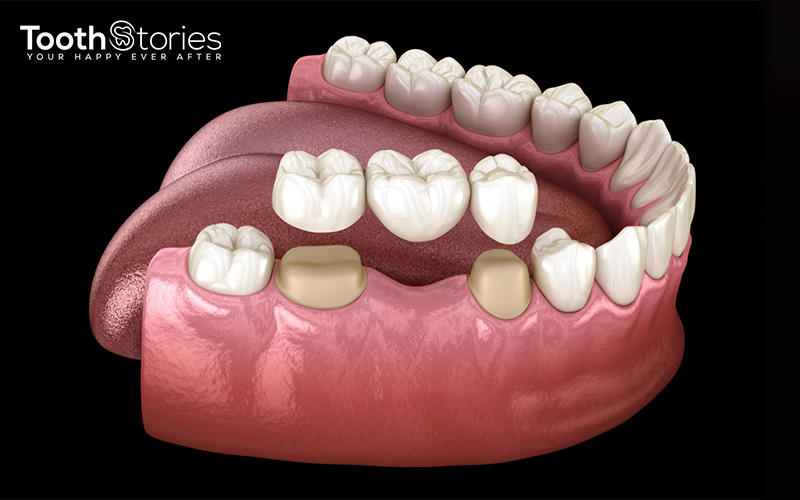
A dental bridge is another method of replacing missing teeth. It bridges the gap by anchoring artificial teeth, or pontics, to the adjacent teeth. Here are their benefits:
A. Restored Dental Function
Dental bridges can also restore your ability to eat comfortably. It is put in place to ensure that the forces generated during chewing are evenly distributed across the remaining teeth and the bridge itself. This helps prevent the overloading of individual teeth, reducing the risk of wear and tear, jaw pain, and discomfort.
B. Prevents Shifting of Teeth
Missing teeth can cause other teeth to shift into the gaps that once held teeth. This movement disrupts teeth alignment and can lead to improper bites. Dental bridges help to bridge the gap, providing stability and preventing adjacent teeth from shifting out of their proper positions. This helps maintain the natural alignment of your teeth and your overall bite.
C. Affordable Choice of Replacing Several Missing Teeth in a Row
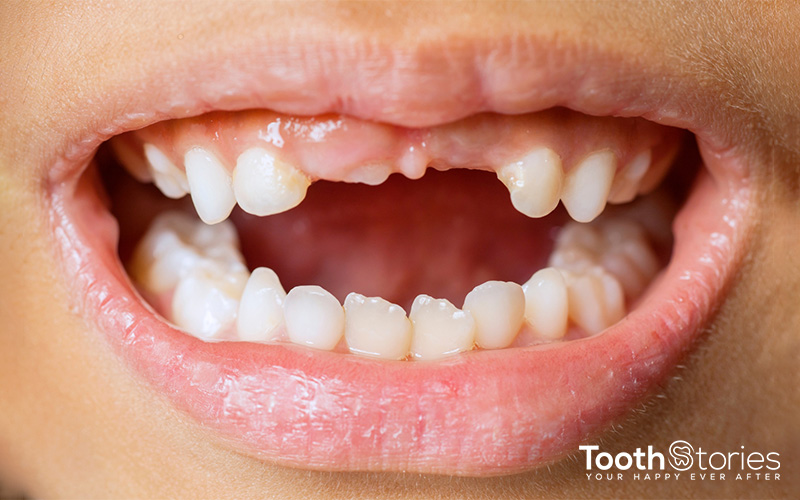
For individuals with multiple missing teeth in a row, dental bridges offer an affordable and practical solution. With just a single restoration, they can replace several missing teeth. This approach saves both time and costs when compared to replacing each missing tooth with a separate implant or restoration.
D. Provides a Natural Look
Modern dental bridges are designed to mimic the appearance of real teeth. In order to help you achieve a natural smile, dental surgeons carefully match the colour, shape, and size of the pontics to your existing teeth. The bridges can blend so well with your existing teeth that they become virtually indistinguishable, boosting your confidence.
E. Speech Improvement
Missing teeth causes gaps that can affect your ability to speak clearly and enunciate certain sounds. These gaps can be filled by dental bridges, providing the necessary support for your lips and tongues to help you articulate words more effectively and confidently.
Dental bridges also come with their own set of challenges. They include:
A. Adjacent Teeth Needs to be Prepared
One significant drawback of dental bridges is that the adjacent natural teeth need to be prepared to accommodate the dental bridge. This involves removing a portion of your teeth’s enamel to ensure a proper fit. Such an alteration can compromise healthy teeth structure and make them more susceptible to future dental issues. The preparation is also irreversible, which means that once the enamel is removed, it cannot be restored naturally.
B. Sensitivity or Discomfort
After the dental bridge placement, you may experience increased sensitivity in the treated area, particularly in the teeth that have been prepared for the bridging. This sensitivity can range from mild discomfort to more pronounced sensations when consuming hot, cold, or sweet food and beverages. While it usually subsides over time, it can be bothersome during the initial healing period.
C. Prone to Fracture or Damaget
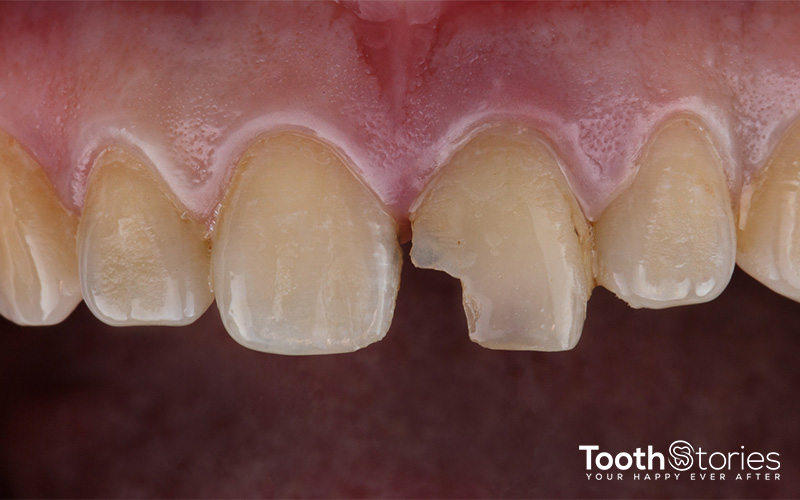
As the adjacent teeth require enamel to be removed, they become more susceptible to damage after dental bridge placement. The reduction in enamel exposes them to a higher risk of developing cavities. It also makes them more prone to fractures, cracks, or even complete breakage, especially if the teeth were already compromised or had existing dental work.
The Process of Getting a Dental Bridge
Step 1: Examination and Preparation
Your oral health will be thoroughly examined, and X-rays or other imaging may be taken to assess the condition of your missing teeth and the surrounding structures. If suitable, the adjacent teeth will be prepared to support the bridge.
Step 2: Temporary Bridge
After tooth preparation, impressions of your teeth will be taken to create a custom bridge. During which, a temporary bridge will be placed to protect the prepared teeth, maintain your appearance, prevent shifting of teeth, and allow you to eat and speak comfortably.
Step 3: Bridge Fitting
Once the permanent bridge is crafted, you will return to your dental surgeon for a fitting. The new bridge will be carefully assessed for fit, aesthetics, and bite alignment. Any adjustments will be made to ensure that it sits comfortably within your mouth and functions properly.
Step 4: Bridge Placement
With the fitting completed and any necessary adjustments made, the permanent bridge will be securely affixed to the abutment teeth using dental cement or bonding material. This creates a stable and functional restoration.
2.3. Dentures
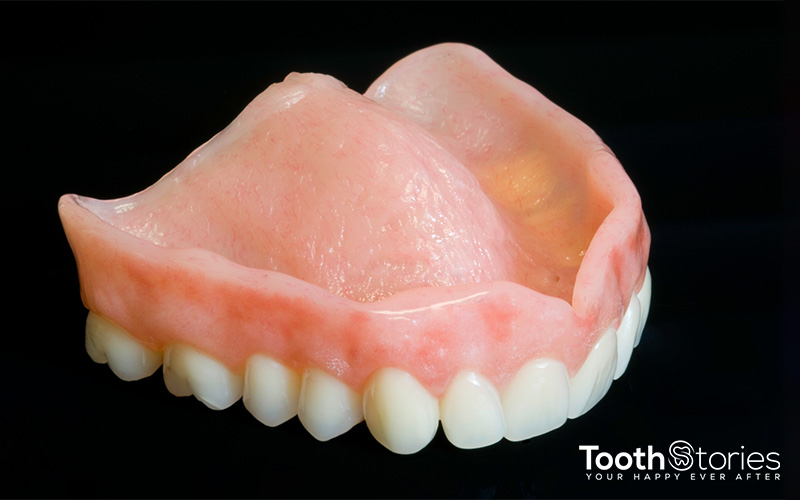
Dentures are removable dental appliances designed to replace missing teeth and surrounding tissue. They are used to restore both the appearance and functionality of a person’s teeth and mouth when natural teeth have been lost.
Dentures are typically made from acrylic materials, but they can also include metal components for added strength and support. They come in two types: complete dentures and partial dentures.
Complete dentures are used when all the teeth in one or both arches are missing. They are custom-made to fit the shape of the patient’s mouth and rest directly on the gums and underlying bone. The dentures are held in place by the natural suction between the denture and the gums. Sometimes, denture adhesives are used for added stability.
Partial dentures are used when only a few teeth are missing. They consist of replacement teeth attached to a metal or acrylic base that is designed to blend in with the patient’s natural teeth. Partial dentures are secured in the mouth using clasps that grip onto the remaining natural teeth.
Some benefits of getting dentures include:
A. Improved Appearance
A. Improved Appearance

One of the most noticeable benefits of dentures is the immediate improvement in a person’s appearance. Natural teeth help support the structure of the face, and their absence can lead to the sagging of facial muscles and tissues. This causes a sunken and aged appearance due to the loss of underlying support.
Dentures provide essential support to the lips and cheeks, as well as help to maintain the proper alignment of muscles to restore the natural contours of the face. This can lead to a more youthful and aesthetically pleasing look, boosting self-confidence and self-esteem.
B. Restored Chewing and Speaking Ability
Dentures are able to restore the chewing surface to allow you to enjoy a more varied diet and maintain better nutritional intake. They also provide the necessary support for proper speech, preventing slurring or mumbling that can occur when teeth are missing.
C. Cost-Effective
Dentures are generally more cost-effective compared to other tooth replacement options such as dental implants or bridges, especially if you have multiple missing teeth to replace. You can easily fill in the gaps in your teeth with just a single appliance.
D. Non-Invasive Procedure

Getting dentures does not involve going through any surgical procedures or major alterations to the remaining teeth. The process is relatively non-invasive, which makes it a suitable option for those who may not be candidates for more invasive treatments.
E. Quick Tooth Replacement
Unlike other tooth replacement methods that may require a healing period, dentures can be fabricated and fitted relatively quickly. This means that you can experience improved oral function and appearance in a shorter time frame.
Here are some drawbacks of getting dentures:
A. Lengthy Adjustment Period
Wearing dentures requires a period of adjustment as many people typically experience discomfort, soreness and awkwardness when they first put on dentures. The feeling of having dentures in your mouth requires getting used to; chewing and speaking may feel different, and the sensation of having a foreign object in your mouth can increase salivation or cause minor irritation. This may take weeks or months to fully adapt to.
B. Regular Maintenance and Care of Dentures
Dentures require consistent and meticulous care to maintain their appearance, functionality, and oral health benefits. Without proper cleaning, they can cause bad breath, infections, and gum irritation. Hence, it is important to remove and clean the dentures daily to prevent the buildup of food particles, plaque, and bacteria, as well as store them properly to prevent warping or damage.
C. Risk of Slippage and Instability
While the use of denture adhesives can provide stability, they may not always completely eliminate the risk of slippage, especially when eating certain foods or speaking vigorously. This can cause embarrassment and discomfort in social situations.
The Process of Getting Dentures
Step 1: Evaluation and Impression
During this step, the dental surgeon will assess your oral health and condition. X-rays may be taken to evaluate the underlying bone structure and any remaining teeth. Impressions capturing the shape and size of the oral tissues, gums, and any remaining teeth will then be taken.
Step 2: Fabrication of Dentures
Based on the impressions taken, a dental laboratory will create a set of custom dentures.
Step 3: Fitting and Adjustment of Dentures
When the dentures are ready, you’ll return for a fitting appointment where the dental surgeon will assess how the dentures fit and your overall comfort with them. They may make certain adjustments to ensure that the dentures can sit securely in the mouth without causing any discomfort or sore spots.
Step 4: Final Placement
After adjusting the dentures, which can take place within the same day or over a period of time, you will be given your set of customised dentures. During which,you’ll be given instructions on how to properly use, care, and maintain your dentures.
To determine which tooth replacement solution is most suited to your needs and circumstances, we recommended having a thorough discussion with a dental surgeon. They will advise you based on your oral health condition and the pros and cons of each option.
2.4. Implant-Supported Dentures
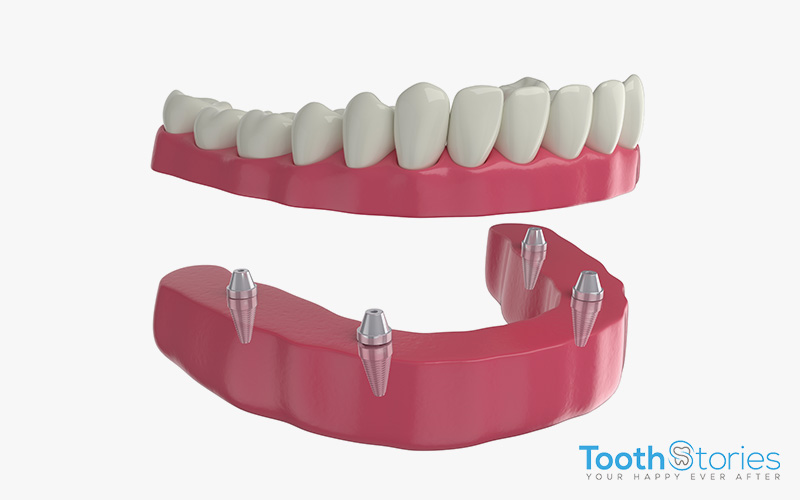
If you’re worried about dentures slipping out of place, implant-supported dentures are a type of dental prosthetic that utilises dental implants instead of adhesives to provide increased stability and functionality. Here’s an expanded look at their benefits in comparison to traditional dentures.
• Increased Comfort
Traditional dentures can cause irritation, sore spots, and discomfort due to movement against the gum tissue. Implant-supported dentures are gentler on the gums and provide a secure fit that minimises friction and rubbing. This allows individuals to wear their dentures with ease throughout the day.
• Better Oral Health
Implant-supported dentures help to stimulate the jawbone and prevent its resorption. This helps maintain the bone structure, facial aesthetics, and overall oral health.
• Minimised Dietary Restrictions
Implant-supported dentures enable wearers to enjoy a wider variety of foods, including those that are more challenging to chew with traditional dentures.
The Process of Getting Implant-Supported Dentures
Step 1: Consultation and Evaluation
During this initial appointment with your dental surgeon, they will evaluate your oral health, take X-rays or CT scans, and discuss with you your dental history, expectations, and concerns. This will help your surgeon determine if you are a suitable candidate for implant-supported dentures.
Step 2: Treatment Planning
The dentist will then create a personalised treatment plan for you, outlining the number of implants you’ll need, their optimal placement, the type of denture, and the materials to be used.
Step 3: Implant Placement
Following which, the dental implants will be surgically placed into your jawbone.
Step 4: Healing and Osseointegration
After implant placement, you’ll be send home to rest and heal. This period allows osseointegration to occur, creating a stable foundation for the dentures.
Step 5: Abutment Placement
Once osseointegration is complete, your dental surgeon will perform a second minor procedure to attach abutments to the implants. Then, impressions will be taken and your custom dentures will be fabricated.
Step 6: Denture Attachment
Finally, the dentures tailored to your oral shape will be fixed in place permanently. In some cases, the dentures can be removed for cleaning.
CHOOSING THE RIGHT SOLUTION
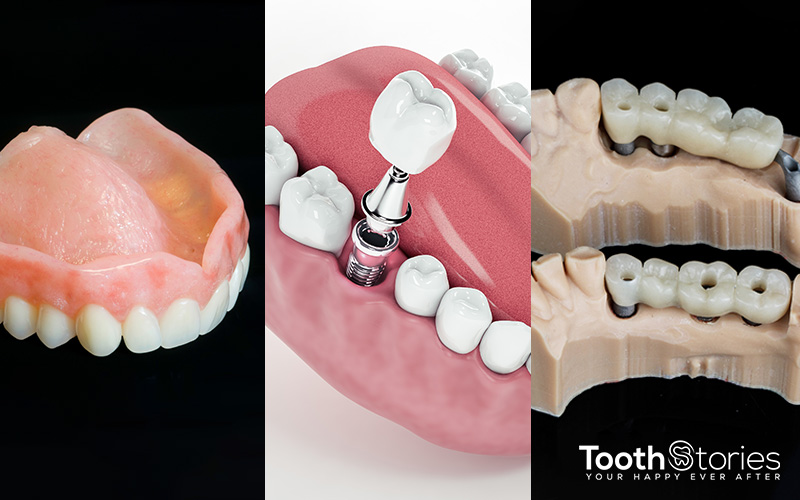
Choosing a tooth replacement solution requires careful consideration of various factors if you want the best outcome for your oral health and overall well-being. Here are some key factors to keep in mind when making your choice.
3.1. Factors to Consider
A. Overall Oral Health Condition
The state of your oral health plays a crucial role in determining the appropriate tooth replacement option. Dental implants require a healthy jawbone and gums for successful integration. So, if you have periodontal diseases or inadequate bone density, you may need preliminary treatments such as bone grafts before undergoing implant placement. In such cases, alternatives like dental bridges or dentures could be more suitable.
B. Stability and Durability
Dental implants, bridges, and dentures have varying levels of stability and durability. Implants are designed to last a long time, and are extremely secure, while dentures and bridges may suffer from significant wear and tear years later.
C. Long-Term Costs
Due to the numerous positive qualities of dental implants, they generally have a higher initial price tag, while dental bridges and dentures have lower upfront expenses. However, dentures and bridges require frequent maintenance, adjustments, and even replacements that can incur more costs in the long run. Calculating the total treatment fee over the years will help you make an informed decision suitable for your pocket.
D. Natural Appearance
If maintaining a natural appearance is a priority, dental implants are often considered the best choice. They are designed to blend seamlessly with your existing teeth to provide a natural-looking smile. Dental bridges and dentures can also give you a natural appearance, but they may not match the look of natural teeth as closely.
3.2. Frequently Asked Questions
1. What problems can dental implants cause?
The majority of dental implants are successful and usually do not cause major issues. However, like many surgical interventions, there are risks involved. In some rare cases, patients may develop infections, experience improper integrations, loose implants, nerve or tissue damage, and other problems.
2. How long do dental implants last?
The durability of dental implants varies depending on several factors, such as your oral hygiene practices, overall health, and lifestyle habits. They can generally last a lifetime with proper care and maintenance.
3. What are the side effects of teeth implants?
Some of the side effects that patients may experience include pain and discomfort, infections, swelling and bruising, and allergic reactions. However, not everyone will experience them.
4. Can you eat hard foods with dental implants?
Yes, dental implants are designed to function like natural teeth, and they allow you to eat a wide variety of foods, including hard ones.
5. What is the difference between implants, bridges, and dentures?
Implants, bridges, and dentures are all dental solutions used to replace missing teeth, but they differ in their design, function, and the way they are anchored in the mouth.
Dental implants are titanium posts surgically placed into the jawbone and completed with a crown. Dental bridges are held in place with the support of the adjacent teeth. Dentures are usually removable, but can be combined with dental implants for more stability and comfort.

The advancements in modern dentistry offer a wide range of solutions to alleviate the challenges posed by missing teeth. These options enable you to not only reclaim your radiant smile, but also help you gain self confidence and self-esteem.
Want to replace missing teeth for an improved quality of life? Tooth Stories is a humble dental clinic in Singapore with a team of experienced dental surgeons here to provide you with effective dental services. Book an appointment with us today.
